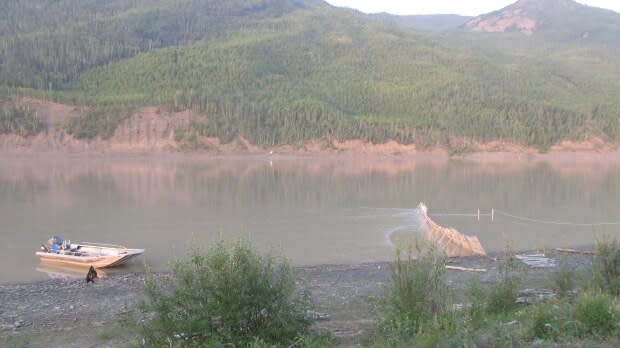Why so glum, chum? Scientists perplexed by this year's low chum salmon numbers in Yukon River
A new count of chum salmon is giving scientists a sinking feeling.
The latest estimates aren't just bad, they're "absolutely dismal," says Stephanie Quinn-Davidson, director of the Yukon River Inter-Tribal Fish Commission in Alaska.
Every year scientists count fish as they swim upstream by Eagle, Alaska, on the way back from the ocean.
Scientists manually review the data from the Eagle sonar. While it can be tricky, they can separate chum from other fish by size, speed, and direction of travel. Chum salmon tend to pass the Eagle sonar about two months after chinook salmon, which allows scientists to count the species separately.
This year the station's fall chum estimate is 23,828 fish.
This is far below what scientists and management groups want to see. What's called a 'spawning escapement goal' is a range of 70,000 to 104,000 fish.
Management groups consider that number a healthy minimum for any kind of sustainable fishery.
This year, both the commercial and Indigenous fishery on both sides of the border has been closed.
One effect is that mushers are no longer feeding chum to their dogs.
This year's estimate for chum salmon at Eagle is only about one-eighth of the average number seen since 2006.
Fish are burning more fat as ocean heats up
Elizabeth MacDonald, executive director at the Yukon Salmon Sub-Committee, says there's a lot to investigate.
In the last 10 years chum salmon have been faring better than chinook salmon. But not this year.
Furthermore, scientists were not expecting this year's chum salmon numbers to take a dive.
"It's quite devastating," she said. "The pre-season forecast was for a closer-to-average run. It means there is something going on that the scientists weren't able to account for this year. It's an unknown thing. And hopefully it doesn't affect them in coming years and we don't see a big crash.".
There are theories to explain the decline.
MacDonald mentions climate change. A warmer ocean can change the balance of available food and have other effects.
For instance, fish burn through fat and reserves more quickly in warmer water. "When it's too warm their metabolism goes up, so they burn through their energy quicker. And if they don't have enough food to meet that energy demand they die," she said.

Farmed fish cause competition
Another factor is competition from large-scale hatcheries, as seafood companies produce fish in farms then release the fish into the ocean for later fishing.
The technique is used by companies from many nations in the North Pacific and Bering Sea. One reason is that it allows companies to label the fish as ocean caught.
Macdonald said the technique causes fierce competition, as wild chum exit the Yukon river to find themselves face-to-face with bigger more mature fish.
"These fish were fed in the hatchery, they go out bigger, they have an easier time competing," she said.
Billions of hatchery fish are released into oceans in this way every year, MacDonald says, which has a profound effect on the natural food web.
Hope for a rebound
With the Yukon River chum fishery closed this year, there is hope for a rebound.
MacDonald says chum populations are known to fluctuate and even have big crashes, but this year's numbers are still unusual.
"They're not as predictable as we like. They are highly variable. Even off very low spawning escapements, you can see really productive runs. It just depends on what environmental factors they encounter," MacDonald said.
Many will be nervously watching next year's count.
"If we saw this for several years in a row, then it would be much more concerning than if it was a single year. So there's still hope."
The count at Eagle sonar is the last of its kind for the year. As winter approaches, scientists can no longer access the sonar site, as it is reached by means of a mountain road the Alaska government doesn't maintain through the winter.
Some research will continue during the winter, MacDonald said as scientists analyze genetics and crunch this year's numbers, in hopes of better understanding what is going on.

